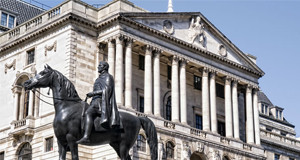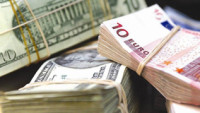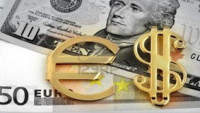 It seems such a long time ago now when record highs for US markets were almost a daily occurrence but after a break of a few weeks normal service was resumed yesterday as the three main major US benchmarks posted record highs for the second day in succession, helped by further talk of tax reform and the hope that we could see some significant repatriation of US dollars. This in turn has also helped fuel the recent recovery in the US dollar over the past three days.
It seems such a long time ago now when record highs for US markets were almost a daily occurrence but after a break of a few weeks normal service was resumed yesterday as the three main major US benchmarks posted record highs for the second day in succession, helped by further talk of tax reform and the hope that we could see some significant repatriation of US dollars. This in turn has also helped fuel the recent recovery in the US dollar over the past three days.
In Asia overnight the main focus was on the latest Chinese industrial production and retail sales data for August. Last week’s trade numbers suggested that while exports showed a slowdown that internal demand appeared to be holding up well. This proved to be wide of the mark with the latest retail sales numbers which came in at 10.1%, a sharp fall from 10.4%, and the lowest rate since February this year.
Industrial production came in at 6%, a sharp fall from July’s 6.4%, and well below expectations of a rise to 6.6%, and thus raising the question as to whether the decent start to the year we’ve seen from the world’s second biggest economy is starting to hit a soft patch and whether the recent rise in the yuan is starting to act as a brake on the Chinese economy.
As a result markets in Europe look set to open in a fairly subdued fashion as we come towards the back end of a busy week for UK data.
Later today the Bank of England is set to deliberate on its latest outlook for the UK economy, and while no change is expected to monetary policy overall there could be little nuances that might point to a slight shift in tone with respect to the timing of a potential paring back of the current level of monetary easing.
At the last inflation report Bank of England governor Mark Carney tried rather unconvincingly to suggest that markets were under-pricing the prospect that the central bank might tighten policy sooner rather than later.
Sadly for him markets have heard this song a number of times before and have become somewhat tone deaf, which suggests that if he wants to send the markets a message he is going to have to be less subtle.
This week’s inflation data is bound to have been a concern for policymakers, and in some ways bears out external MPC member Michael Saunders view which he articulated at the end of last month, that we need a rate hike to ease off the monetary accelerator, particularly since unemployment remains low, and he is unlikely to deviate from this belief especially since the unemployment rate has fallen even further, since he made those comments at the end of last month.
His fellow dissenter Ian McCafferty is unlikely to alter his view that the UK needs a rate rise either which means that we are likely to see the rate split remain at 7-2 as it was in August. The only unknown remains around the vote of the chief economist Andrew Haldane, whose sledgehammer it was last year that caused this week’s sharp inflation spike to 2.9%.
He has previously suggested that he might be inclined to support removing some of the stimulus from last year in the second part of the year, but he would need to see some evidence of a pickup in wages. Yesterday’s wages numbers didn’t really provide that to any degree coming in at 2.1% for the three months to July, which suggests that he is likely to remain on the fence.
On the other hand if the MPC wanted to send a message to the markets then a Haldane shift to the hawk camp would certainly do that, and help keep a tactical floor under the pound at a time when other central banks are already starting to look at hitting the monetary brakes.
With inflation already at a five year high the Bank of England needs to be seen to be at least leaning in the same direction as its peers even if it still remains some way away from reversing last year’s rate cut.
EURUSD – yesterday’s failure to break back above the 1.2000 level keeps the prospect of a move back to the 1.1820 area. The break below 1.1910 suggests we could well have seen a short term peak. For now the larger resistance remains at the 1.2170 level which is the 50% retracement of the 1.3995/1.0340 down move.
GBPUSD – the pound appears to have found a short term top at the 1.3320/30 level, having finally completed its April breakout. The slide back below the 1.3225 area could well prompt a deeper pullback towards the 1.3030 level.
EURGBP – the 0.9040 area appears to be capping the euro for now and while it does so the risk of a break below the 0.8980 area brings about the prospect of a move towards the 100 day MA at 0.8845. The 0.9220/30 level remains the key resistance on the top side while we also have trend line resistance at the 0.9170 level.
USDJPY – we continue to head back to the 111.00 area with a break retargeting the 112.00 area. A break back below 109.80 reopens a move back towards the 109.20 area.












